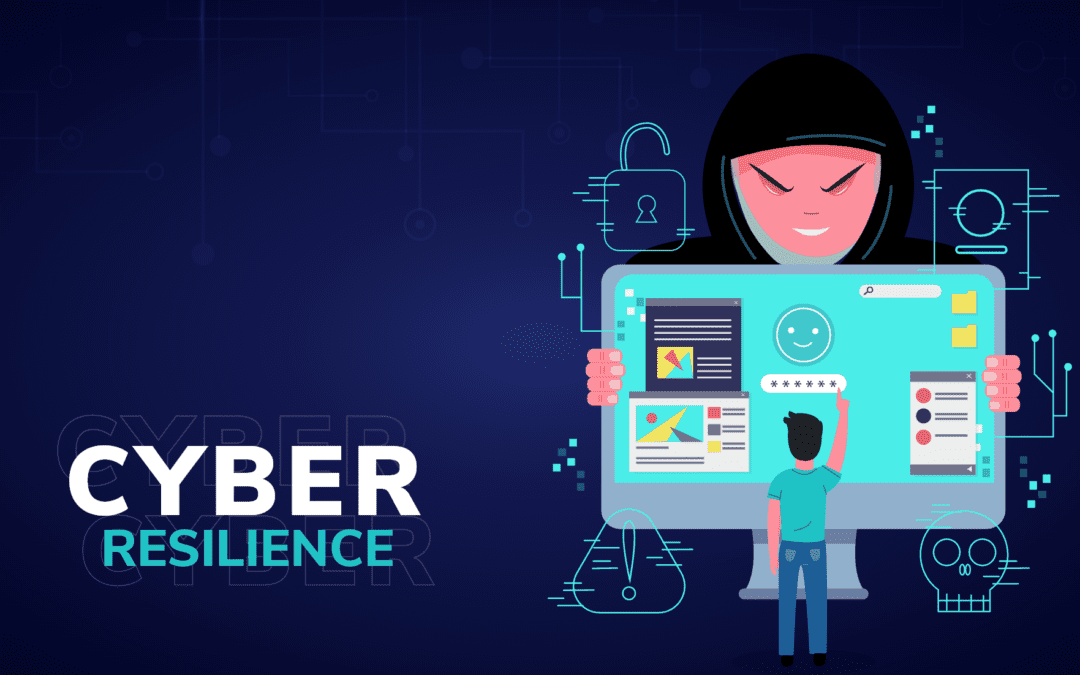In today’s rapidly evolving digital landscape, cyber resilience is crucial in safeguarding organizations and individuals from the ever-increasing threat of cyberattacks. Cyber resilience, defined as the ability to withstand and recover from cyber threats, has become paramount in modern cybersecurity. Not only does cyber resilience allow organizations to minimize potential risks, but they can also safeguard their digital assets in an interconnected world.
Understanding the Importance of Cyber Resilience
In an era characterized by sophisticated cyber threats, the importance of cyber resilience cannot be overstated. With cybercriminals continuously devising new attack techniques, organizations must prioritize cyber resilience to mitigate potential risks and consequences.
Through proper implementation of cyber resilience practices, organizations can fortify their defenses and build robust frameworks that withstand the ever-evolving threat landscape. With appropriate care, firms can swiftly detect, respond to, and recover from cyber incidents, minimizing potential damages and downtime. To understand the full significance of cyber resilience, you would first need to familiarize yourself with the concept of cyber threats and the many ways in which these threats come about.
What Are Cyber Threats?

Organizations face numerous cyber threats in the digital era that require a robust cyber resilience approach. Knowing these common threats will help better understand how cyber resilience is crucial in mitigating their impact.
1. Malware Attacks:
Malware attacks pose significant risks. By embracing cyber resilience measures, organizations can fortify their systems, quickly detect and respond to malware incidents, and minimize potential damage.
2. Phishing and Social Engineering:
Phishing and social engineering exploit human vulnerabilities. A cyber resilience-focused approach empowers employees to recognize and report these threats, fostering a vigilant workforce that helps prevent successful attacks.
3. DDoS Attacks:
DDoS attacks disrupt online services. Organizations can bolster cyber resilience by implementing robust network security measures, ensuring availability, and efficiently managing traffic during such episodes.
4. Insider Threats:
Insider threats demand a proactive cyber resilience approach. By implementing access controls, monitoring user activities, and fostering a cybersecurity-aware culture, organizations can minimize risks associated with insider threats.
5. Advanced Persistent Threats (APTs):
APTs require a comprehensive cyber resilience strategy. Strengthening security measures, conducting regular risk assessments, and sharing threat intelligence contribute to early detection and effective response against APTs. Cyber resilience can help keep you and your organization safe from all cyber-attacks.
The Foundations of Cyber Resilience

Cyber resilience encompasses the principles, strategies, and practices that enable organizations to withstand, adapt to, and recover from cyber incidents effectively. It has certain essential foundations that organizations must establish to navigate the complex cybersecurity landscape.
1. Comprehensive Risk Assessment:
Cyber resilience begins with a comprehensive risk assessment, identifying potential vulnerabilities and allowing organizations to address weaknesses and enhance their security posture. This assessment includes evaluating network infrastructure, software vulnerabilities, and user access controls.
2. Robust Prevention Strategies:
Cyber resilience demands robust prevention strategies, including firewalls, intrusion detection systems, secure network configurations, and regular software patching. These measures form essential components of cyber resilience by acting as the first line of defense against potential threats.
3. Real-Time Detection and Response:
Cyber resilience requires proactive monitoring to detect potential threats. By leveraging advanced threat detection technologies, such as intrusion detection and prevention systems, Security Information and Event Management (SIEM) tools, and behavioral analytics, organizations can identify and respond to cyber incidents swiftly. Real-time detection enables immediate action to mitigate potential damages.
4. Incident Response and Recovery:
In the face of cyberattacks, having a well-defined incident response plan is crucial. Cyber resilience enables organizations to minimize the impact of incidents through effective incident response processes, including incident identification, containment, eradication, recovery, and lessons learned. This ensures a structured, coordinated approach to minimize disruption and restore normal operations.
What Benefits Does Cyber Resilience Offer?
In today’s digital world, cyber threats constantly risk organizations. Cyber resilience, which emphasizes detecting, responding, and recovering from cyber incidents, offers several benefits in safeguarding businesses.
Minimizing Financial Losses:
Cyber resilience reduces the risk of data breaches, fraud, and financial theft. It ensures proactive measures are in place to detect and prevent cyber threats, helping organizations avoid costly consequences and maintain customer trust.
Safeguarding Reputation and Customer Trust:
By prioritizing cyber resilience, organizations demonstrate their commitment to protecting sensitive data and maintaining critical systems. This helps preserve reputation, customer trust, and brand integrity, differentiating them in the marketplace.
Ensuring Business Continuity:
Cyber resilience allows organizations to maintain essential operations during and after a cyber incident. Businesses minimize downtime and ensure continuous service by implementing redundancy, backup mechanisms, and disaster recovery plans.
Strengthening Stakeholder Confidence:
A robust cyber resilience posture instills confidence in stakeholders. Organizations prioritizing cyber resilience foster trust, attracting investors, partners, and employees who value security and responsible practices.
Ensuring Operational Continuity:
Cyber resilience is vital for maintaining business continuity. By implementing resilient systems and response protocols, organizations can minimize downtime and ensure seamless operations, even in the face of cyber disruptions. Redundant infrastructure, backup power systems, and alternative communication channels are essential for maintaining operational continuity.
The Human Element in Cyber Resilience

People play a pivotal role in cyber resilience. Despite technological advancements, human actions and decision-making remain central to effective cybersecurity. They are the first line of defense, capable of identifying and reporting potential threats. Organizations must undertake specific steps to ensure that the people are ready to face and mitigate cyber threats before they can cause any actual harm.
Building Cybersecurity Awareness:
Organizations must prioritize cybersecurity training and awareness programs to empower employees to recognize and respond to potential threats. Regular training sessions, phishing awareness campaigns, and ongoing communication can foster a culture of cybersecurity awareness.
Cultivating a Cyber-Ready Culture:
Inculcating a culture of cyber resilience is essential. Organizations can strengthen their defenses by fostering a mindset that values security and encourage proactive participation in maintaining cyber resilience. Regular security audits, incident reporting mechanisms, and a reward system for security-conscious behavior can contribute to a cyber-ready culture.
Employee Vigilance and Responsiveness:
Employees should have the knowledge and tools to report suspicious activities or incidents promptly. Their vigilance and responsiveness are crucial in ensuring the success of cyber resilience strategies. Establishing incident reporting channels, providing incident response training, and encouraging an open and transparent reporting culture can empower employees to contribute to cyber resilience actively.
The Future of Cyber Resilience

The digital landscape is constantly evolving, presenting new challenges and risks. The future of cyber resilience lies in embracing emerging technologies such as artificial intelligence, machine learning, and blockchain. These technologies can enhance threat detection, improve response times, and fortify the resilience of organizations against cyber threats. Advancements in cybersecurity automation, threat intelligence sharing platforms, and predictive analytics will significantly strengthen cyber resilience.
Final Thoughts
Cyber resilience is of utmost importance in an era where cyber threats are omnipresent. By prioritizing cyber resilience, organizations can build strong defenses, detect threats in real time, respond effectively, and recover swiftly from cyber incidents. Cyber resilience ensures the continuity of operations, protects sensitive data, and safeguards organizations’ financial and reputational standing. We can navigate the digital landscape with confidence and security by fostering a cyber-ready culture, enhancing prevention strategies, and leveraging emerging technologies. Embracing cyber resilience is not just necessary; it is the key to safeguarding our digital future. Let us strive for a resilient and secure digital ecosystem where organizations and individuals can thrive peacefully.
